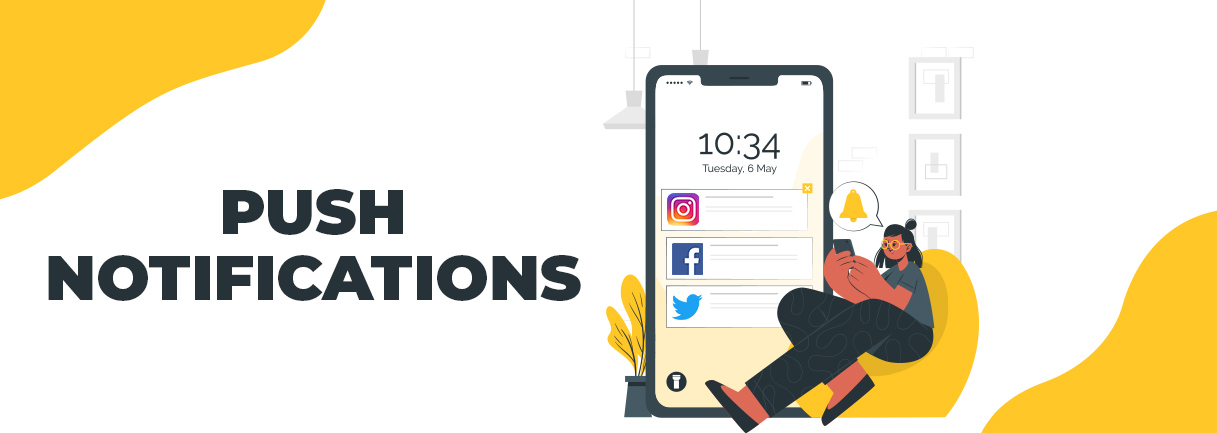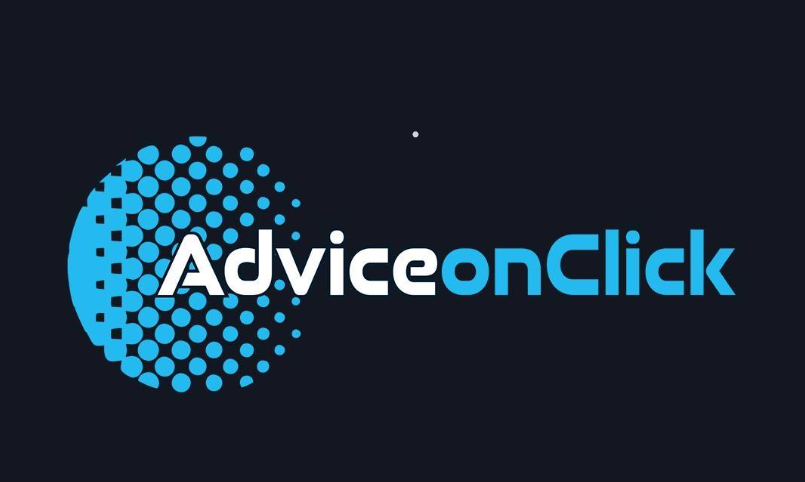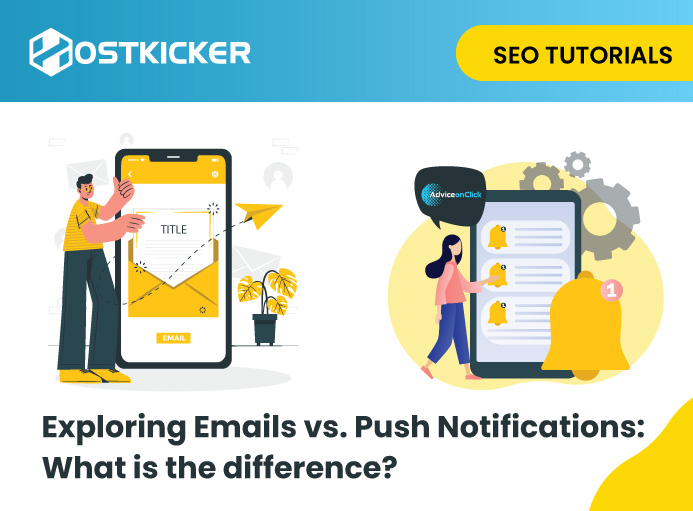Exploring Emails vs. Push Notifications: What is the difference?
In this fast-paced digital world, effective communication is the path to success. It helps connect people, businesses, and ideas across the world and allows individuals to attain their objectives. Among plenty of communication channels available in the market, emails and push notifications are robust tools that are growing in popularity and helping businesses to engage and interact with their users effectively. Whether you are a business owner or marketer or simply want to understand emails vs. push notifications services, you have landed right. In this blog post, we’ll discuss emails vs. push notifications in detail, their importance, difference, pros, and cons for business.
So, without ado, let’s get started!
Emails Vs. Push Notifications
Emails and push notifications are both marketing channels that help businesses to connect with customers and convey the brand’s message easily and effectively. If used correctly, both are valuable for businesses as they help them achieve identical objectives, such as boosting user engagement, sales, and conversions.
Although they both share various similarities, they both are very different from each other.
Are you interested in knowing which one is better? Well, our answer is it depends. This is because, at times, push notifications can be a better choice, whereas sometimes, emails can outperform push notifications.
So, let us dive into the comparison of Emails vs. Push notifications and help you choose the best marketing tool for your business.
What is Email Marketing: Advantages & Disadvantages.

Email marketing is an efficacious strategy for sending emails to customers and potential customers to convey a brand’s message effectively to attain a particular business objective. It’s a traditional but valuable marketing strategy that is used to send various kinds of emails, from Newsletters and promotional to transactional.
Advantages of email marketing for business
In this section, we’ll discover the advantages of using email marketing for business and why you must include it in your marketing strategies.
1. More extensive reach and availability
Since most users have internet access all the time, it makes it easier for users to access their email anytime and from any device. Users can check their emails many times a day, which increases the likelihood of your email getting noticed and clicked. This is why emails have an extensive reach and availability to their audience.
2. Low costs and high Return on Investment
Total spending and ROI are what all businesses focus on when looking for a marketing channel. Emails are an affordable marketing channel that requires minimal spending and provides greater ROI in return. This indicates that you can send hundreds and thousands of emails to your customers at a very low cost and gain a profitable return on investment.
3. Ideal for any length of content
Email marketing does not restrict you to a specific length of content. You can create lengthy as well as short emails as per your needs.
Generally, it is advised to keep your emails short, simple, interesting, and engaging. However, you may want to extend your content length sometimes to make it informative. Thus, email marketing allows you to adjust your message length easily.
4. Increased Customization opportunities
Email marketing provides marketers with various customization options that can help enhance the quality and engagement of emails and drive increased results.
Emails can be as simple as plain text, or you can add images, video links and CTAs, and more to make them enticing. In addition, you can also use HTML or CSS to create captivating newsletter templates to market your brand. Moreover, email marketing lets you personalize your email campaigns to engage and build a strong connection with your clients and drive increased sales and conversions.
5. No time boundation
Emails are not time specific. This means that they do not demand the urgent attention of users, similar to push notifications, and can be read later whenever the receiver gets time. It’s notable that once your email reaches its destined inbox, it will remain there unless the user deletes it intentionally. This increases the chances of grabbing the user’s attention and getting clicked. This is because whenever the users open their inbox, your email’s subject line can compel them to click and read further.
6. Measurable outcomes
Email marketing allows you to analyze and track your marketing campaigns. You can easily track various metrics, including click-through rates (CTR), open rates, conversions, and more which lets you examine the success of your email campaigns and make data-based decisions.
7. Automate your campaigns
Email marketing lets you automate your email campaigns, allowing you to save a lot of time that you can utilize to design your other campaign and help your business succeed.
For instance, you can automate welcome emails for your new customers and trigger emails based on their actions.
8. Retargeting is easy
While comparing email vs. push notifications, retargeting customers in email marketing is easy.
This is because most of the users join email lists and never unsubscribe. If they do not find the email valuable, they either ignore it or delete it.
This means that even if one of your email campaigns fails, you can retarget them with your new email campaign. This brings increased opportunities for your success.
9. Tools for email marketing

Now, you’ll need tools to get started with email marketing and get the most out of it for your business. There are various potential email marketing in the market, such as Mailchimp, constant contact, and more. These can help you design your emails with pre-made templates, personalize your campaign and track your progress from one place and allow you to grow your business.
Disadvantages of Email Marketing
Email marketing is an affordable and converting marketing strategy that is growing in popularity. However, besides its numerous advantages for businesses, it has a few drawbacks. Let us highlight them in brief.
1. High competition in the client’s inbox
Being an effective and cheap marketing channel, email marketing is a useful and favorable marketing strategy for most marketers. This means that most marketers target users with emails, making their inboxes overwhelmed with messages. This is where challenges arise. With a lot of emails in the inbox, chances are most of the emails get ignored. This affects the open rate of all the emails, lowering the success of email marketing campaigns.
Thus, learn to create catchy subject lines that are hard to resist if you are looking to get the most out of your email marketing.
2. Delivery challenges
In email marketing, the most notable drawback is the delivery challenge email has to face to reach its targeted user. Emails often have spam filters and rigid inbox algorithms, which can prevent the message from reaching the user’s primary inbox. This can affect the visibility of your email, its open rate, and CTR, impacting the overall success of your campaign.
Thus, you must obey best practices and maintain a reputation to overcome delivery challenges.
What are Push Notifications: Advantages & Disadvantages.

Push notifications are the small messages that pop up on users’ device screens to deliver the brand’s message effectively. These notifications can be seen even when the device screen is locked, and the app is not in use. Push notifications are designed to be viewed in real-time and can be used to send users updates, promotions, reminders, and more. These play a vital role in grabbing users’ attention and generating immediate engagement. They have a higher CTR and open rate and can help businesses effectively communicate with users.
Advantages of Push Notifications for Business
Push notifications are short and appealing brand messages that provide the following benefits for businesses. Discover why you must include it in your marketing strategy.
1. Easy to Subscribe
Compared to other marketing channels and traditional emails, Push notifications are often easy to subscribe to. In order to subscribe to a push notification, users are required to click a subscription button simply;
whereas to sign up for emails, users are required to fill in their details, including email id, name, contact number, and more, in an opt-in form and submit it to confirm their subscription.
Most push notifications services provide a one-click subscription, making it easy for users to subscribe.
2. Instant message delivery
Push notifications are delivered to users instantly on their screen without requiring an inbox, unlike emails that are delivered to an inbox that users are required open separately.
Push notifications are more effective on mobile devices and work well with all channels.
Regardless of the user’s device, they are instantly delivered to the user’s screen to convey the brand’s message. This boosts their visibility, driving better results for the business.
3. Create a sense of urgency.
Since push notifications seem like mobile notifications, they create a sense of urgency and grab users’ attention instantly. They compel users to take action, such as making a purchase, visiting a site, and interacting with the app, fulfilling their intent.
4. Gather authentic user details.
Push notifications are designed to gather correct user details as they work on users’ browsers to avoid fake data collection.
As many users often provide an incorrect email address, it can impact the CTR and open rate of campaigns. Therefore, push notifications eliminate this risk and gather correct user details to drive positive outcomes.
5. Higher-customization options.
Similar to emails, you can customize and personalize push notifications based on the campaign and individual users to attract and engage them effectively. When a sense of urgency is added to personalization, it can enhance the likelihood of gathering more leads and conversions.
6. Increased personalization opportunities.
Both emails and push notifications allow you to personalize your message, but push notification stands out. In emails, you can only use the names of users, but with push notification apps, you can collect users’ data much more than names, such as users’ location, interests and tastes, app activity and time, behavior, last purchase, and more. This data can give you insights into users’ needs and wants, allowing you to personalize your notification deeply and drive positive outcomes.
7. Increased user retention
You can employ push notifications to engage your users, remind them of your business, offer, and value, and keep your brand on top of their minds. By sending frequent and valuable notifications, you can boost your brand’s user retention and drive positive outcomes, leading your business to the path of success.
8. Tools for push notifications
Now that you know what push notification is and its pros and cons clearly, it’s time to discover the tool to get started with push notifications. There are various push tools in the market, such as PushEngage, PushCrew, Google Firebase, and more, but our favorite push notification is the latest AdviceOnClick.

It’s a tool that lets business owners send unlimited upcoming updates, offers, and coupons to potential customers and attract and engage them with the brand. The practical tool comes with an intuitive user interface and is completely ad-free. It does not require any inbox and delivers the brand’s message directly to the user’s screen.
The best part? It is completely free for Hostkicker users.
Disadvantages of Push Notifications
Push notifications are valuable in user engagement but have some drawbacks which marketers must consider. Let us highlight them in brief.
1. Limited content length
The major drawback to using push notifications is the content limitations.
For different browsers and platforms, push notifications have varying word limits which limits you to keep your content within the specified limits.
For instance, the title length is 30-60 characters, and the description length is 65 to 200 characters.
This means that to make your push notification effective, you have to create a clear and concise message that is attractive and engaging and within the character limit at the same time.
2. Get overblown easily
Compared to emails, push notifications have a higher click-through rate which readily grabs the marketer’s attention. This is why marketers send recurring push notifications to users, ruining their experience.
Also, too many notifications from various businesses can change users’ perspectives on push notifications which can impact the sign-ups.
3. Necessity to opt-in
To send push notifications to users, it is required that they
opt-in for your push notification services. This means that compared to email marketing, you might end up with a smaller audience if only a few users opt-in for your services. This can limit your audience reach, impacting your brand communication.
4. Platform Limitations
Usually, push notifications are more effective on mobile devices and web browsers supporting them. Therefore, compared to email marketing, push notifications can majorly influence mobile users. This can limit the audience reach, lowering the chances of success. Remember, the more users you can target, the more will the success chances.
5. Retargeting is difficult
When comparing emails vs. push notifications, retargeting in push notifications is difficult if the users turn off the notifications. This is because if you send frequent notifications that are of no value to users, they are likely to turn off the notifications, and you will not be able to communicate with them again. Also, convincing them again to turn on the notifications is a daunting task.
Therefore, you are required to create push notifications wisely in order to entice and engage them with your brand.
Comparing emails vs. Push notifications: which is better for your business?
While comparing emails vs. Push notifications, it might be confusing when it comes to deciding which is better to include in business strategies.
However, we feel both tools are special and serve valuable purposes for different business needs. One can be better for a particular situation, while the other can be more effective in another scenario.
Emails are valuable when it comes to newsletters, informational and transactional emails, as they all serve different purposes. In addition, emails are affordable, more extensive, long-lasting, and more. On the contrary, push notifications, as they have higher CTR, create urgency, can be personalized greatly, and are an easy subscription option.
Thus, utilizing both strategies together can bring additional benefits to businesses. These can increase the CTR and open rate, and attract and engage users more effectively, resulting in increased productivity and success.
Let your brand communicate effectivity with emails and push notifications!
Effective communication is valuable for businesses to grow and succeed. Both emails and push notifications might appear similar, but both are different potential marketing tools for all sizes of businesses.
But, it’s notable that the effectiveness of both tools can differ based on your industry, targeted audience, and your business goals.
Here we’ve covered email vs. push notifications in detail to help you understand them more clearly. By understanding their unique traits, creating quality content, and implementing best practices, you can take advantage of both platforms and enhance your business communication with customers.
So, whatever your business goal is, whether enhancing user experience, boosting communication, or strengthening relationships, make use of both the tools for your business and help it thrive.
One important thing that you must keep in mind is to create engaging and attractive content. Because unless your content is valuable, it can’t help you succeed.
So, create valuable content and avail of both tools and strengthen your business connection with your audience.
Also Read: How to increase organic traffic to your website.
Also Read: How to create a giveaway to grow your email list.
